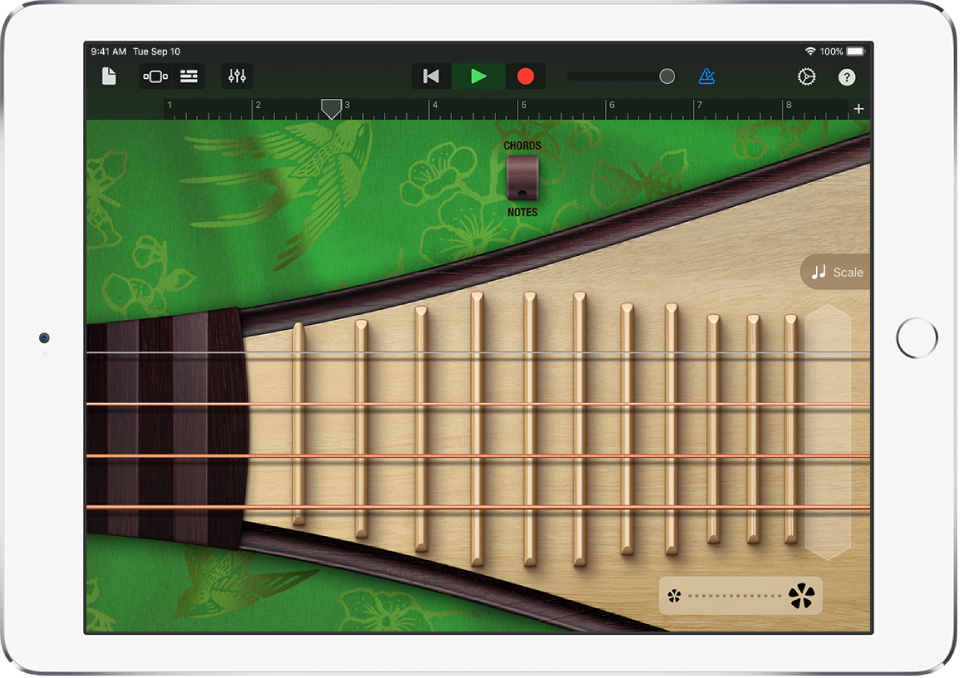
Play the Pipa in GarageBand for iPad
The pipa is a lute used in Chinese classical music. It has four strings (tuned A-D-E-A from low to high) and is played with finger picks. Plucking the strings is called pi outward and pa inward. You can press down on the strings to add vibrato, and you can also bend strings while playing. An important technique called Lunzhi involves rapidly plucking the string with different fingers while fretting a note.

Open the Pipa
Tap the Browser button
 , swipe to World, then tap the Pipa button.
, swipe to World, then tap the Pipa button.
Play chords
Tap the Chords/Notes switch near the top to switch to Chords view.
To play a chord, swipe up or down on one of the chord strips. You can also tap strings to play individual notes of a chord.
You can add your own custom chords to play.
Play a pattern
Turn the Autoplay knob to one of the numbered positions.
Tap a chord strip. Tapping a different chord strip plays the same pattern with the notes of that chord.
To stop the pattern playing, tap the chord strip again.
Play individual notes
Tap the Chords/Notes switch near the top to change to Notes view.
Do any of the following:
Play notes: Tap the strings on the fretboard. You can also bend a string vertically to bend the pitch of a note up.
Play notes of a particular scale: Tap the Scale button, then tap the scale you want to play.
The fretboard changes to show note bars. Tap the bars to play the notes of the scale.
Add Lunzhi tremolo
You can add Lunzhi tremolo while playing either notes or chords.
Touch and hold the Lunzhi slider as you play. You can control the speed of the tremolo by moving your finger left or right.